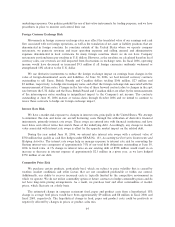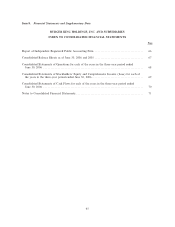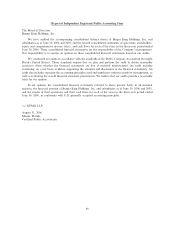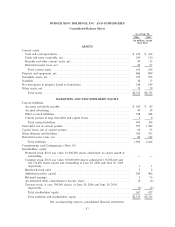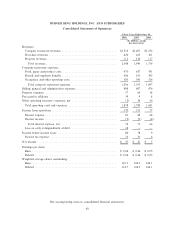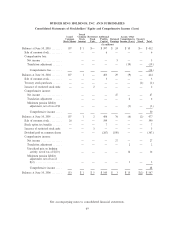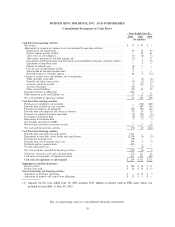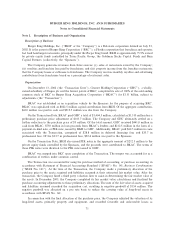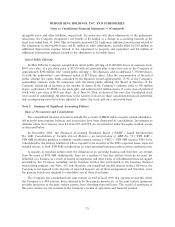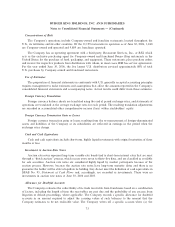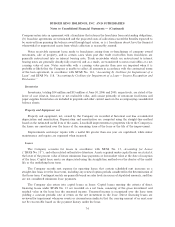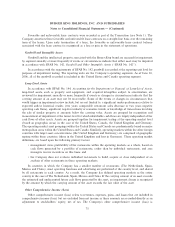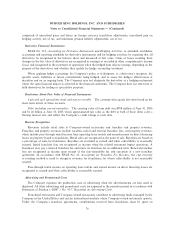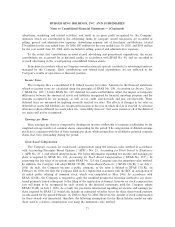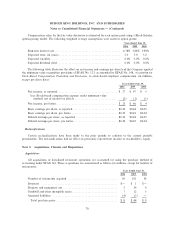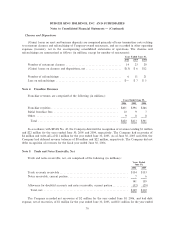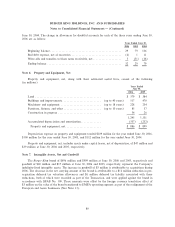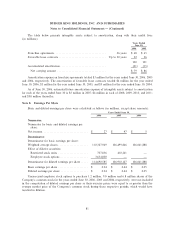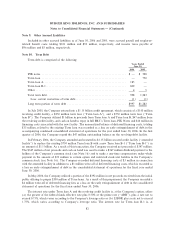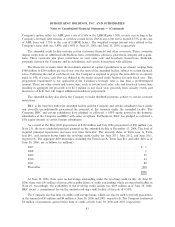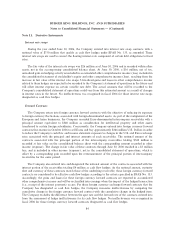Burger King 2006 Annual Report Download - page 86
Download and view the complete annual report
Please find page 86 of the 2006 Burger King annual report below. You can navigate through the pages in the report by either clicking on the pages listed below, or by using the keyword search tool below to find specific information within the annual report.BURGER KING HOLDINGS, INC. AND SUBSIDIARIES
Notes to Consolidated Financial Statements Ì (Continued)
Company enters into an agreement with a franchisee that releases the franchisee from outstanding obligations,
(b) franchise agreements are terminated and the projected costs of collections exceed the benefits expected to
be received from pursuing the balance owed through legal action, or (c) franchisees do not have the financial
wherewithal or unprotected assets from which collection is reasonably assured.
Notes receivable represent loans made to franchisees arising from re-franchisings of company owned
restaurants, sale of property, and in certain cases when past due trade receivables from franchisees are
generally restructured into an interest bearing note. Trade receivables which are restructured to interest
bearing notes are generally already fully reserved, and as a result, are transferred to notes receivables at a net
carrying value of zero. Notes receivable with a carrying value greater than zero are impaired when it is
probable or likely that the Company is unable to collect all amounts in accordance with the contractual terms
of the loan agreement, in accordance with SFAS No. 114, ""Accounting by Creditors for Impairment of a
Loan'' and SFAS No. 118, ""Accounting by Creditors for Impairment of a Loan Ì Income Recognition and
Disclosures.''
Inventories
Inventories, totaling $14 million and $15 million at June 30, 2006 and 2005, respectively, are stated at the
lower of cost (first-in, first-out) or net realizable value, and consist primarily of restaurant food items and
paper supplies. Inventories are included in prepaids and other current assets in the accompanying consolidated
balance sheets.
Property and Equipment, net
Property and equipment, net, owned by the Company are recorded at historical cost less accumulated
depreciation and amortization. Depreciation and amortization are computed using the straight-line method
based on the estimated useful lives of the assets. Leasehold improvements to properties where the Company is
the lessee are amortized over the lesser of the remaining term of the lease or the life of the improvement.
Improvements and major repairs with a useful life greater than one year are capitalized, while minor
maintenance and repairs are expensed when incurred.
Leases
The Company accounts for leases in accordance with SFAS No. 13, Accounting for Leases
(""SFAS No. 13''), and other related authoritative literature. Assets acquired under capital leases are stated at
the lower of the present value of future minimum lease payments or fair market value at the date of inception
of the lease. Capital lease assets are depreciated using the straight-line method over the shorter of the useful
life or the underlying lease term.
The Company records rent expense for operating leases that contain scheduled rent increases on a
straight-line basis over the lease term, including any renewal option periods considered in the determination of
that lease term. Contingent rentals are generally based on sales levels in excess of stipulated amounts, and thus
are not considered minimum lease payments.
The Company also enters into capital leases as lessor. Capital leases meeting the criteria of direct
financing leases under SFAS No. 13 are recorded on a net basis, consisting of the gross investment and
residual value in the lease less the unearned income. Unearned income is recognized over the lease term
yielding a constant periodic rate of return on the net investment in the lease. Direct financing leases are
reviewed for impairment whenever events or circumstances indicate that the carrying amount of an asset may
not be recoverable based on the payment history under the lease.
74


